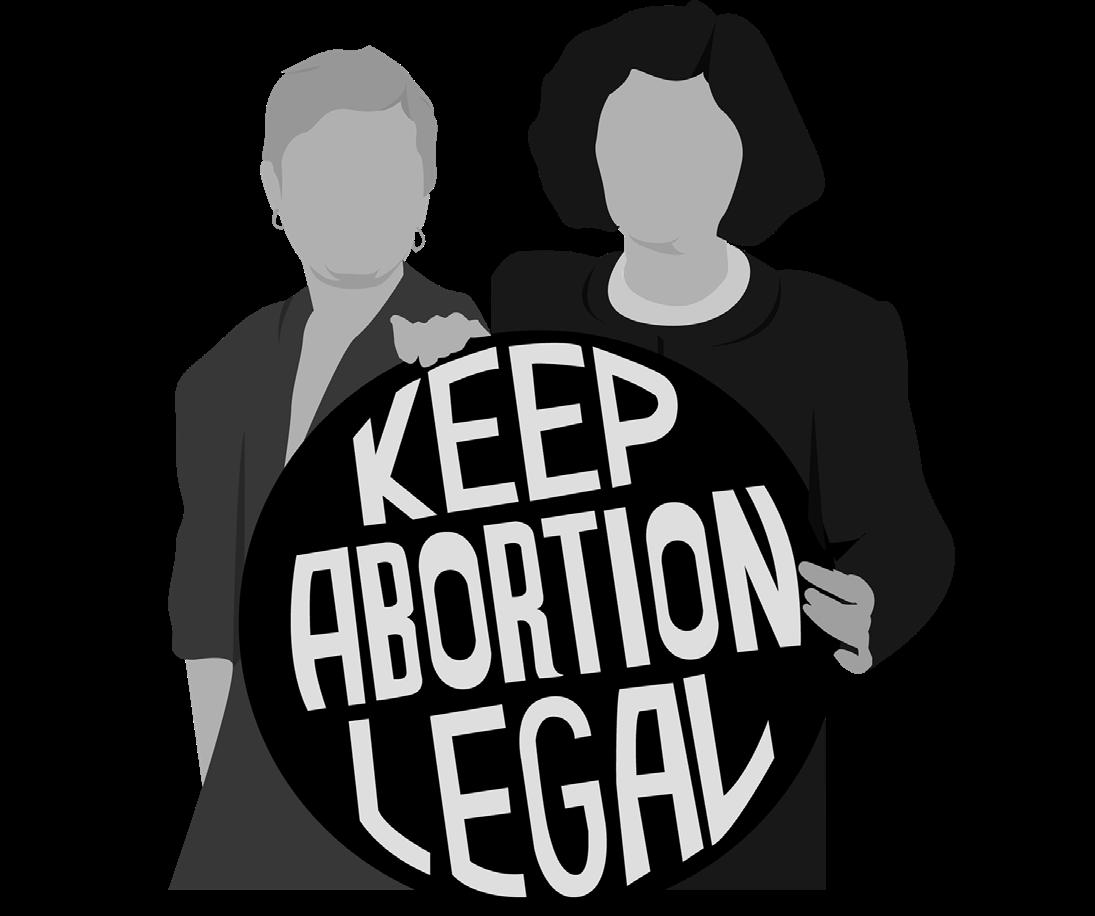
5 minute read
19th Amendment
A Century of Women Voting 100TH ANNIVERSARY OF THE 19TH AMENDMENT
Text by PAISLEY ANNES, MERWA MAROF and ABIMBOLA BOLARINWA Art by LAUREN YAN
WAVING LARGE AMERICAN FLAGS, women celebrate with homemade megaphones and smiling faces. The photo captures the moment when the ratification of the 19th Amendment was announced. Their spirit was echoed by many across the United States.
While the ratification of the 19th amendment was a big step forward for women’s rights, women of color were largely excluded from this milestone. African American women were barred from the polls — especially in areas where Jim Crow laws were prominent — and many were unable to cast a vote until the Voting Rights Act of 1965.
“We still have areas in America that have struggled to find their way to vote because they have strategically been violated by not being able to get to a voting location to vote, and these are often communities of color,” said Nancy Shepherd, president of the Palo Alto
League of Women Voters. Over the past century, women’s impacts in politics can be seen in numerous milestones — such as the first female governor being elected into office, the first female U.S. Supreme Court justice swearing in and a woman coming closer to becoming president than ever before. These women and their drive to pursue careers in politics even when all odds are stacked against them must be celebrated and admired as we, 100 years later, continue the fight for women’s equality. v 1923 Equal Rights Amendment introduced
1973
After being granted the right to vote, Alice Paul, a suffragist, feminist and women’s rights activist, announced her campaign to ratify the Equal Rights Amendment. Women needed to be constitutionally equal to men on all counts.
The ERA would secure women’s rights under the Constitution, declaring that no rights should be denied on the basis of sex.
Congress voted on the amendment and passed it to the states for the ratification process in 1972 — to become an amendment, the ERA required ratification from 38 states. An initial deadline of seven years was placed and then extended to 10 years. Just short of three states, the ERA failed to pass.
The efforts to ratify are not over. Activist groups are still rallying in the remaining states to ratify the amendment. If Congress extends the time limit and the three remaining states vote in favor of the amendment, a possible 28th Amendment could be added to the U.S. Constitution. Roe v. Wade

With the resurgence of the women’s movement came the issue of abortion rights in the case of Roe v. Wade. The case secured the right to abortion with a majority vote among the Supreme Court of 7-2 in 1973.
Norma McCorvey brought federal action against the district attorney of Dallas County after being denied the right to obtain a safe abortion in her own home. The Supreme Court ruled in favor of McCorvey according to the fundamental right to privacy found in the Ninth Amendment.
Other cases limiting the scope of Roe v. Wade followed, and the topic has fluctuated in and out of the political limelight ever since.
While the Supreme Court does not have any cases threatening to overturn Roe v. Wade in the upcoming term, abortion activists on both sides are still relentless in their fights. Pro-Choice America is hosting many virtual gatherings, including the Silicon Valley Peninsula Power Of Choice event, to spread awareness about their cause.
1981

Supreme Court of the United States gains first female justice Former Associate Justice Sandra Day O’Conner was appointed to the Supreme Court in 1981 by Ronald Reagan, and became the first female Supreme Court justice. While serving as a judge, O’Connor was considered a moderate conservative and was a swing vote in many decisive cases. One such case was Planned Parenthood v. Casey (1992), which upheld the right to abortion decision of Roe v. Wade. This was the first Supreme Court case in which a woman was involved in a decision about a woman’s body, and O’Connor continued to defend women’s rights throughout her career. Since O’Connor, there have been three more female Supreme Court justices, including feminist icon Ruth Bader Ginsburg. Ginsburg was a part of many monumental cases, including Ledbetter v. Goodyear Tire & Rubber Co. which gave women and men equal pay. If President Donald Trump appoints a new justice, Republicans will have appointed six out of the nine supreme court seats, leaving women’s rights activists concerned whether Ginsburg’s hard work will be overturned.
2016
Hillary Clinton becomes first woman to win presidential nomination
In the 2016 presidential election, former Secretary of State Hillary Clinton became the first woman to be the presidential nominee of a major party, marking a historic moment in U.S. history. While she lost in the electoral college, she won the popular vote by about three million ballots, making her the most successful female presidential candidate to date.
Compared to other developed countries, the U.S. is behind. Britain, France and Australia are just a few of the dozens of other countries that have had female presidents or prime ministers. However, Clinton’s relative success inspired to many. According to the American Center for Women and Politics, 431 women ran for the House in the record-breaking 2018 midterms, compared to the 212 women who ran in 2016.
Moving forward into the presidential election, it’s important to consider that the fight for women’s representation is not nearly close to complete. According to a 2018 Pew Research Center study, while women only make up 24% of Congress, 67% of right-leaning adults believe there are enough women in politics.

Kamala Harris becomes the 2020 vice-presidential nominee2020

On Aug. 19, California Sen. Kamala Harris made history by becoming the first Black and South Asian woman to be a major party’s vice-presidential nominee.
While Harris is part of a new age of diversity within the government, there remains unfinished work. The 116th Congress is the most racially and ethnically diverse, but women of color hold just 8% of the seats in Congress.
There have only been 78 women of color who have served in the U.S. Congress out of the 12,348 total people. Out of those 78, 48 of them currently serve in Congress.
As it stands, the diversity in government fails to represent the diversity of our nation.
The results of the upcoming election will determine whether or not 2021 will be the year the first female vice president is elected. However, this is just the start. Women, especially women of color, are not equally represented in our government, even after 100 years of fighting.










